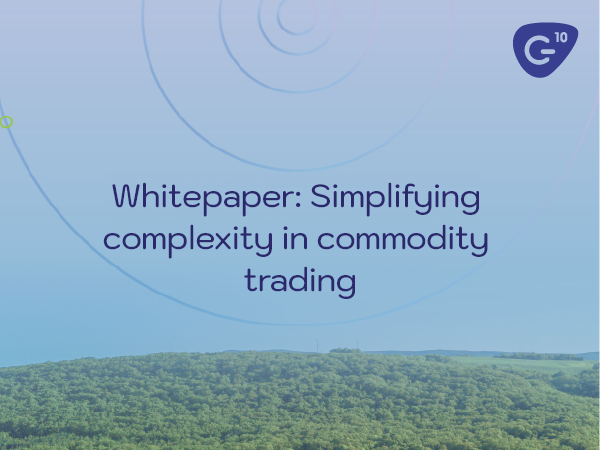Metals and concentrates traders have a great deal of information to manage, made all the more complex by the assays that form a critical part of this information. Assays play an important role in pricing, so every premium and penalty needs to be accounted for in contracts. But assays are also highly changeable and can be updated at various times in the contract lifecycle following new shipment information and inspections.
And assay data management does not only impact traders. Because assays affect pricing and valuations, they impact on risk management, as well as being needed for financial documents, including Letters of Credit and invoices. Not to mention the many ways that operators and logistics professionals need to manage and distribute assay information in the course of their day.
But how is this information updated and shared across internal teams? Across all commodity classes, one of the main challenges that we typically see is that trading, risk, and operations teams operate inside business silos. This introduces communication gaps between teams, leading to operational risk and slower operations, meaning that no team can reach their full potential. Closing these communication gaps and getting data flowing smoothly between teams is therefore an essential and urgent priority for all commodity traders – particularly when this information is both complex and changeable as is the case in metals and concentrates.
Assay management in logistics
For operators, assay management can be a challenge, as there can be many quality fields associated with each virtual lot in a contract or shipment, which may need to be processed together, split, or updated after inspections. Splitting stock into virtual lots or updating assay records can be a complicated and time-consuming task if your team does not have the systems in place to support commodity trading and logistics workflows. But with the right Commodity Management System, it can become incredibly straightforward. For example, Gen10’s CommOS allows you to split large lots into their constituent parts, all with their own data, based on one file upload.
When managing purchase contracts, operators need to understand the contract terms, including assays, and ensure that the incoming lots are within tolerance. Operators also have an important role to play when allocating stock to sales contracts. The more information they have readily available around the contract tolerances and assay data, the better-able they are to ensure the most profitable allocations within the tolerance limits.
And when shipments are allocated, the relevant quality information needs to be shared between teams as well as externally, including for invoicing, and finance documents such as Letters of Credit.
Breaking down the silos
Information gaps between teams are a problem in all businesses and can have many root causes, including conflicting objectives or incentives, workplace culture, and technological barriers. In many trading companies, there is certainly willingness to share information between teams, but poor technological systems have made this a challenge.
There are some solutions that aim to share data more widely. For example, CTRM systems are designed so that risk managers understand traders’ positions. However, these CTRM systems often rely on traders updating them after they have carried out their actual tasks, so these systems rarely give a live view of positions or inventory. And CTRM systems often still leave information gaps between trading and logistics teams that need to be filled by other solutions.
In contrast, Commodity Management Systems were designed to connect all aspects of a commodity trading business; including trading, risk, operations, and finance, so that trading can be at the heart of the business. Data is shared live across all who need it as they are all using the system to manage their day-to-day activities, and flows seamlessly across teams. And the best Commodity Management Systems include integrations with external software too, so that any other systems you are using still function as part of the commodity management ecosystem.
For assay management, this means that the live inventory management shows all positions, as well as the assay and quality data. This data can be viewed and filtered as needed by different teams; operators may wish to see unallocated stock in a particular location whereas traders may be more interested in seeing where they have access to underused credit lines or market opportunities.
Putting data at the heart of your business by incorporating data-sharing as part of your systems, rather than as an add-on that people need to fill in later means there is no need for copying information across systems, no need for waiting for other teams, and no need for interruptions when other teams require up-to-date information. It also means that reconciliation takes place in real-time throughout the day.
Find out more about how CommOS supports assay management.
Conclusion
Implementing a Commodity Management System can mean a significant change in the way your teams think about the ownership and sharing of data internally. Distributing data across the organisation means that traders have instant access to the information they need to make the best trading decisions, whilst freeing themselves from the burden of reporting to other teams.
For metals and concentrates traders, who need to manage large and complex data-sets for each lot, getting assay data and other information into one system, where it can be easily stored, used and shared, is a vital way to speed up operations and get the data both trading and other teams need to be able to operate at their best.
Discover how CommOS supports metals and concentrates traders.
Want to read more?
Subscribe now for monthly updates
By submitting your details you agree that we can store your data and communicate with you. You can opt out of these communications at any time. Read all in our Privacy Policy.



